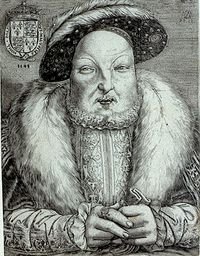 On 30th December 1546, Henry VIII signed his last will and testament, authorising changes he’d instructed William Paget to make on his behalf on 26th December 1546. These changes were made to ensure successful transfer of royal authority to his son, the future Edward VI, and to prepare for Edward reigning during his minority.
On 30th December 1546, Henry VIII signed his last will and testament, authorising changes he’d instructed William Paget to make on his behalf on 26th December 1546. These changes were made to ensure successful transfer of royal authority to his son, the future Edward VI, and to prepare for Edward reigning during his minority.
The changes included:
- Changes to proposed titles and grants – For example, Edward Seymour was originally meant to be Duke of Hertford and his son Earl of Wiltshire, but Paget changed it to “duke of Somerset or Exeter or Hertford and his soonne erle of Wiltshire if he be duke of Hertford.” There were also cancelled earldoms which affected John, Lord Russell, and William Paulet, and a cancelled barony for Sir Thomas Arundel.
- Confirmation of those men who would form a council to advise his son Edward during his minority.
- The addition of the Suffolk line, the offspring of Henry VIII’s sister, Mary Tudor, as heirs after Henry’s own children.
You can read more about the provisions of the will in my article “Henry VIII’s Will” and you can read the will itself at British History Online – click here and scroll down to note 634 (LP xxi. Part 2. 634).